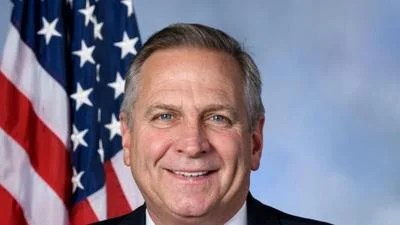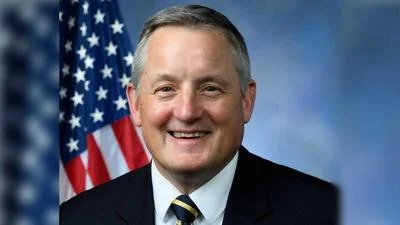House Appropriations Committee Chair and Labor, Health and Human Services, Education, and Related Agencies Subcommittee Chair Rosa DeLauro (D-CT-03) delivered the following remarks at the Subcommittee's hearing on tackling teacher shortages:
Before we begin, I want to take a moment to address the tragedy that occurred in Texas yesterday.
I am angry, I’m in disbelief to be here once again. Yesterday, the students and teachers at Robb Elementary School in Uvalde, Texas woke up ready to learn. They woke up ready to teach. But nineteen children, one teacher, and a school employee went to school only to be taken from us forever. This senseless attack is absolutely heartbreaking, but it is not anything new. Mass shootings are taking the lives of babies, parents, brothers, and sisters everywhere. And my community knows this all too well. A tragedy occurred at Sandy Hook Elementary School nearly ten years ago. It took the lives of 20 beautiful, innocent souls, babies and six teachers, and it shook us to our very core.
We are gathered today for this hearing to find ways to support our educators. But how can we begin to speak of support for our teachers if they are not physically safe at school? It is alarming and it’s outrageous that so many children in America’s schools and their parents and teachers worry that a senseless act of gun violence could take their lives. The American people and our nation’s children are waiting on us to take immediate action to save innocent kids and to save their teachers.
In today’s hearing, we will examine the root causes driving the teacher shortage. While we were not expecting yesterday’s tragedy to loom over our conversation today, we must keep it top of our mind as we consider the challenges our educators confront each day nationwide. So I welcome our witnesses today:
- Ms. Desiree Carver-Thomas, Researcher and Policy Analyst, Learning Policy Institute
- Dr. Lindsey Burke, Director of the Center for Education Policy, Heritage Foundation
- Ms. Randi Weingarten, President, American Federation of Teachers
- Dr. Jane West, Education Policy Consultant
As a substitute teacher early in my career, I bore witness to the challenging work that educators do and the demands that they are put under every day – something that is hard to grasp unless you are in the position yourself. I trust our teachers, and know it is our job to provide them the resources and support that they need to thrive.
The witnesses with us today know this well. They represent a diverse group focused on the wellness of our students and their educators. But they also know that the teacher shortages plaguing our nation threaten all that those teachers provide to our students. If there are not teachers to educate our kids, the very foundation on which our nation’s progress is built gets dissolved.
Every student deserves a high-quality education. But teacher shortages threaten our ability to provide that education.
The pandemic exacerbated the existing challenges our nation faced to ensure every student has access to the diverse and well-prepared educators they deserve. In the 2017-2018 school year, nearly every state, including my home state of Connecticut, experienced teacher shortages in high need subjects and in special education. And that same year, more than 100,000 teaching positions around the country were vacant or staffed by people unqualified for the job. In New Haven Public Schools in my district today, there are over 150 vacancies for certified teaching positions.
Teachers are unfortunately leaving the profession. There has been a significant increase in retirement and a dramatically shrinking pipeline into the profession, with over 300,000 fewer students enrolling in teacher preparation programs over the past decade. Potential teachers struggle with financial concerns, with the high cost of preparation, with the subsequent burden of student debt, and with a lack of competitive compensation. K-12 teachers earn 20 percent less than other college graduates do – further creating recruitment and retention issues. A RAND Corporation report found that the top reason for teacher departures was that pay did not match the stress or the risks of the job.
Alongside these issues is a high turnover rate – a rate double that of other high-achieving nations. A lack of administrative support, dissatisfaction with testing and accountability pressures, lack of opportunities for advancement, and disappointing working conditions lead teachers to other professions.
And this was all before the pandemic imposed new burdens on our schools and their teachers. The total enrollment in undergraduate institutions dropped by 6.6 percent, including 14.1 percent for community colleges. This concerns me greatly since 80 percent of our educators start their teaching careers with a bachelor’s degree; and community colleges that link with four-year institutions are a unique source of diverse teachers.
Tragically, as a result of teacher shortages and the impact of the pandemic, 55 percent of educators reported in a January National Education Association survey that they will leave the profession sooner then they had planned.
These are not just numbers. These highlight the very real crisis impacting students across the nation. The achievement gap that students of color, low-income students, and students with disabilities tragically experience is in large part due to inequitable access to qualified teachers. Every student and every child benefits from having diverse teachers, and in a nation where the majority of students are people of color, a workforce made up of just 20 percent teachers of color is not enough. And tragically, data reported to the Department of Education for this year projected a shortage of educators trained to meet the needs of students with disabilities in all but two states.
Congress has a lot of work to do to address teacher shortages and I intend to lead these efforts. Since becoming Chair of this Subcommittee, we have increased funding, in a bipartisan way, for comprehensive educator preparation programs, including in the recently passed fiscal year 2022 omnibus.
We included $59 million for the Teacher Quality Partnership Grant program to fund educator residences and other high-retention pathways. $95 million for the I-D-E-A Personnel Preparation Program to prepare special educators and the higher education faculty and researchers who support their training. $8 million in first-time funding for Hawkins Centers of Excellence – we are supporting educator training at HBCUs and MSIs. And we provided $2.2 billion in Title II, a critical source of funding for the preparation and professional development of teachers.
There is more we must be doing. Our witnesses lay out solutions to many of the problems we face. I share their view that proactive investments in pipeline and preparation programs will help us reduce shortages in the years to come. As we build this subcommittee’s fiscal year 2023 funding bill, we must consider the funding and policies necessary to help increase recruitment and retention, improve working conditions, and support teacher advancement.
Our first Secretary of Education and the woman who made the Department and federal support for our teachers into what it is today, Shirley Hufstedler, said, and I quote “To the teacher, America entrusts her most precious resource, her children, and asks that they be prepared...to face the rigors of individual participation in a democratic society.”
As you all know, we are experiencing emergency-level teacher shortages. From our witnesses, I look forward to learning how this Committee and the federal government can continue to address this crisis and ensure every student has access to a well-prepared, well-paid, diverse, stable, and supported teacher. In our country, teaching has always been one of our most highly revered professions, and we must do everything that we can to keep it that way. Afterall, we do entrust our teachers with our most precious resources and, ultimately, the future of our democracy.
Subcommittees:
The Departments of Labor, Health and Human Services, Education, and Related Agencies (117th Congress)
117th Congress
Original source can be found here.








